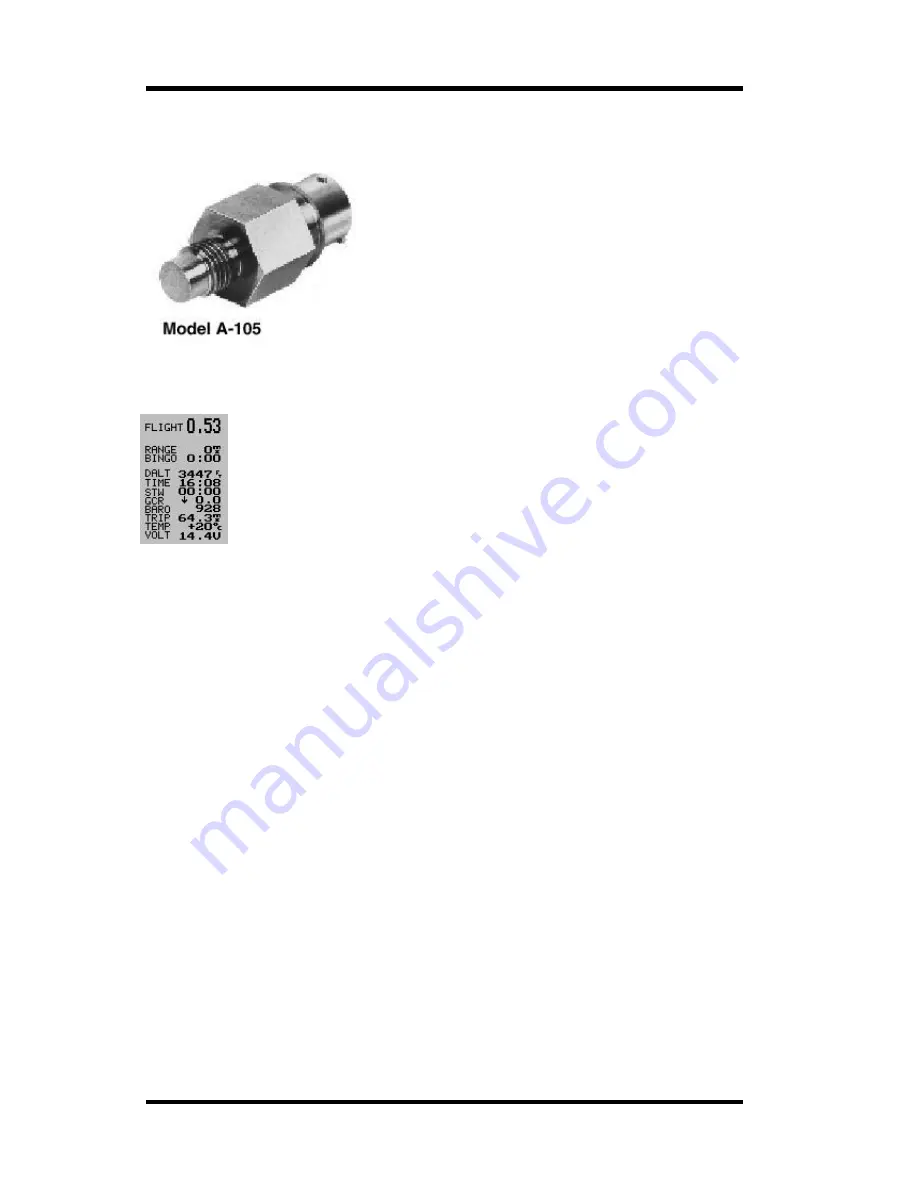
MGL Avionics Stratomaster Ultra Horizon XL Owner’s manual
Page 49
You can enable an alarm, activated below a minimum pressure level. You can select the
required minimum pressure level. This is selected in the Engine detail setup menu.
Example Honeywell Sensotec A-105 pressure sender
suitable for aggressive liquids.
Numeric information displays
The Ultra Horizon XL provides you with a number of numeric information items
that you can place onto the display.
Each numeric item has an associated label that is also an independent item. This
allows you to place the identifier for the numeric item at your convenience.
Each numeric item can be shown in either a small font or a large font. In the
sample display on the left you can see the flight time using a large font and the
remainder of the items uses a small font.
The following documentation lists every available item in this category.
DALT (DENSITY ALTITUDE)
Density altitude is pressure altitude corrected for air density. This relates to altitude and
temperature. To use this function you must install the included ambient temperature probe so
the instrument can measure the correct ambient temperature.
Density altitude is an useful indicator for your aircraft’s performance at altitude. The altitude
given is the equivalent altitude that you should consider your aircraft to be at currently,
regardless of the actual altitude. This in turn will enable you to correctly assess required take-
off and landing distances as well as load carrying abilities. Consult your aircraft’s handbook
on relevant de-rating curves.
BARO (BAROMETER)
The barometer shows your current ambient pressure. It is the basis of your altimeter.
Why include a barometer in an aircraft – this is a question we get asked often. Here is why:
Firstly and perhaps most obviously, it has uses when predicting frontal systems and general
weather forecasting. Sailors use it with great effect and much the same reasons apply for
many of us aviators.
The second reason however I value as the most important: To convince you that flying too
high in an unpressurised aircraft without added oxygen is not a good idea.
At an altitude of 12.000 ft (3 658 m), considered by many as limit for unaided ascent, the
barometer reading will be as little as 640 mb (18,9 Inch of Hg) even less depending on local
conditions at the time. Further considering that at sea-level you will be at around 1000-1025
mb (29,5 – 30,3 Inch of Hg) most of the time, you should easily see that you’re going to
deprive your lungs of badly needed oxygen. Many accidents have happened as a result.






























